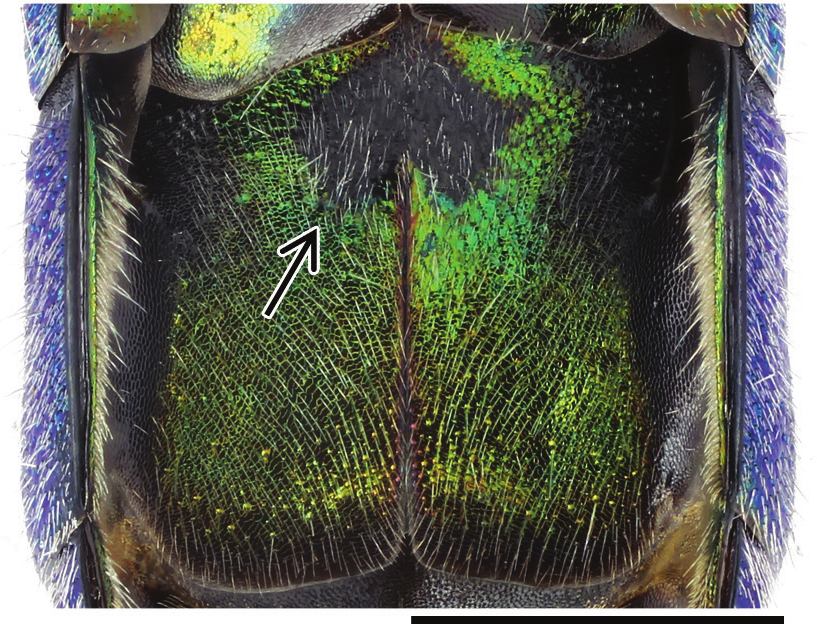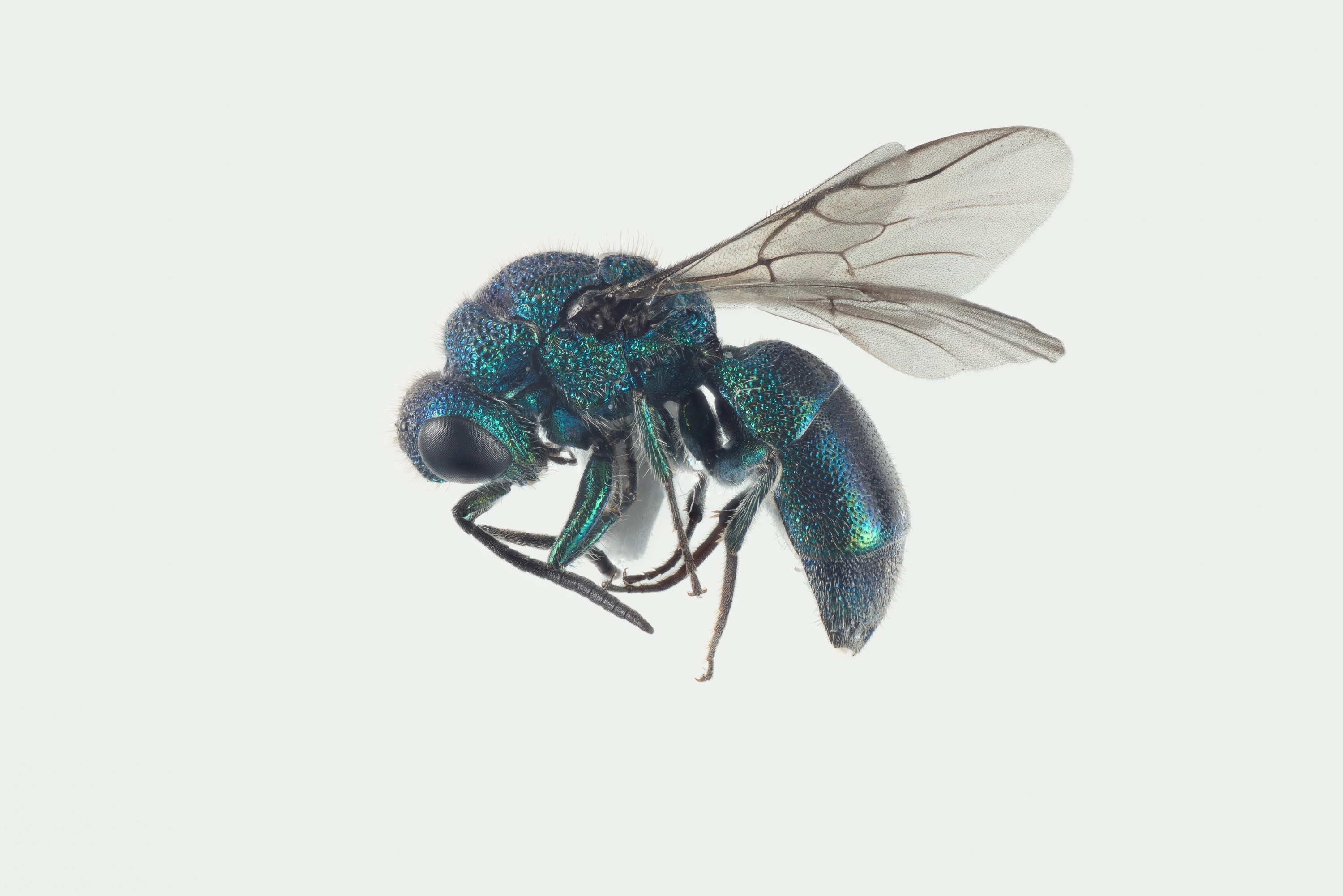Trichrysis cyanea
Figure 197
Trichrysis cyanea ♀. Scale 1 mm.
A very common species occuring in forest margins, clearings and gardens with sun-exposed dead wood in most parts of the region. The hosts are wood living Crabronidae in the genus Trypoxylon. Very easy to recognize by the small size, narrow shape, completely blue colour, and the three apical teeth of T3.
- Innhold
- Diagnosis
- Distribution
- Biology
Diagnosis
Figure 198
T3, dorsal view: Trichrysis cyanea ♀. Scale 1 mm.
Figure 199
S2, ventral view: Trichrysis cyanea ♀. Scale 1 mm.
Length 4–8 mm.
The species is characterised by its completely green, blue or violet body (Fig. 197) and the tridentate posterior margin of T3 (Fig. 198). The male in particular is often dorsally or rarely almost completely black. The lateral teeth of T3 are often more like angles, and sometimes all teeth can be small or rounded and inconspicuous. The black spots of S2 are small and located close together (Fig. 199).
Distribution
Denmark, Estonia, Finland, Latvia, Lithuania, Norway, Sweden. Very common.
Trans-Palearctic: from Europe and northern Africa to central Asia, Siberia, Korea, China and Japan (Linsenmaier 1999, Kurzenko and Lelej 2007, Rosa et al. 2014).
Be aware that the records present in the GBIF map may be misleading for some countries due to unrevised data sets or missing information.
GBIF Taxon: Trichrysis cyanea (Linnaeus, 1758)Biology
Habitat: forest margins, clearings and gardens with sun-exposed dead wood (e.g. dead tree trunks, log and branch piles, walls of wooden buildings or poles). Adults occasionally visit flowers of Apiaceae and Rosaceae (Kusdas 1956, Rosa 2004, our own obs.).
Flight period: late May to early September.
Host: primarily species of Trypoxylon Latreille (Crabronidae), but also Auplopus carbonarius (Scopoli) and species of Dipogon Fox (Pompilidae), and possibly other cavity-nesting crabronid wasps (Dufour and Perris 1840, Morgan 1984, Brechtel 1986, Asís et al. 1994, Gathmann and Tscharntke 1999, Tormos et al. 1996, Pärn et al. 2014, our own obs.). Also many cavity-nesting solitary bee species have been reported as hosts, but these records are rather unreliable due to the very different biology of bees compared to crabronid and pompilid hosts.



